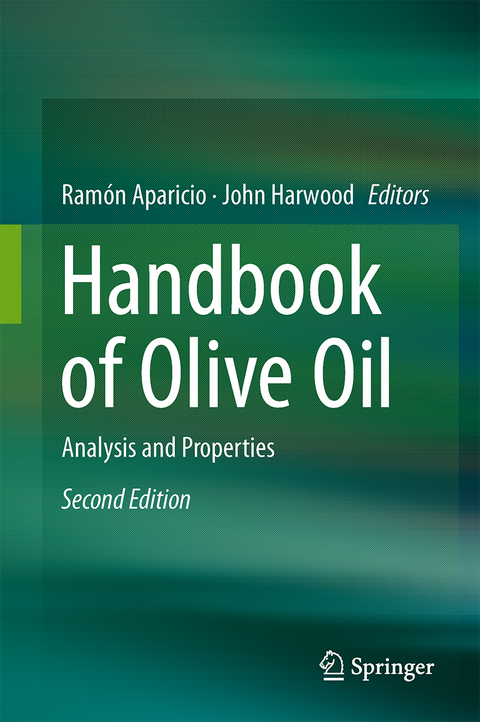
Handbook of Olive Oil
Springer-Verlag New York Inc.
978-1-4614-7776-1 (ISBN)
Nutritional and sensory aspects are the basis for the current success of virgin olive oil among consumers, and this new edition re-analyzes in two new chapters the role of lipids, in general, and olive oil, in particular, in nutrition and health. In addition, the methodologies developed for determining sensory quality, olive oil oxidation, and deep-frying are extensively described and discussed. The role of consumers in olive oil studies of marketing and acceptability is covered in a new chapter.
This second edition has not ignored the fact that the popularity of olive oil has made it a preferred target for fraudsters. Deliberate mislabeling or mixtures containing less expensive edible oils are topics described in depth in two chapters devoted to traceability and adulteration. There is also a new chapter focused on the olive refining process, which is a relevant activity in the olive oil world, and another chapter displaying tables of chemical and sensory information from olive oils produced all over the world.
The book is written at two levels: the main level is structured as a tutorial on the practical aspects of olive oil. A second, more methodological level, is intended for specialists in the different sciences that contribute to olive oil studies (biochemistry, chemistry, physics, statistics etc).
This edition also details changes that are needed in different disciplines in order to overcome current problems and challenges.
Ramón Aparicio, Physicist, Instituto de la Grasa (CSIC), Seville, Spain John L. Harwood, Biochemist, Cardiff University, Wales, UK
Introduction.- Growing Olives for Oil.- Technical Aspects.- Lipid metabolism in olive: biosynthesis of triacylglycerols and aroma components.- Genetics and Molecular Biology of Olives.- Chromatographic Methodologies: Compounds for Olive Oil Traceability Issues.- Chromatographic Methodologies: Compounds For Olive Oil Color Issues.- Chromatographic Methodologies: Compounds for Olive Oil Odor Issues.- Analytical methodologies: Phenolic compounds related to olive oil taste issues.- Infrared, Raman and fluorescence spectroscopies: Methodologies and applications.- Nuclear Magnetic Resonance: Methodologies and Applications.- Olive Oil Characterization and Traceability.- Olive Oil Oxidation.- Sensory quality: Methodologies and Applications.- Olive oil consumer research: Methods and key learnings.- Olive Oil Authentication.- Role of Lipids in Human Nutrition.- Olive Oil as a Functional Food: Nutritional and Health Benefits.- Olive Oil Refining Process.- Tables of olive oil chemical data.
| Zusatzinfo | 43 Illustrations, color; 135 Illustrations, black and white; XII, 772 p. 178 illus., 43 illus. in color. |
|---|---|
| Verlagsort | New York, NY |
| Sprache | englisch |
| Maße | 155 x 235 mm |
| Themenwelt | Medizin / Pharmazie ► Gesundheitsfachberufe ► Diätassistenz / Ernährungsberatung |
| Naturwissenschaften ► Biologie ► Biochemie | |
| Naturwissenschaften ► Chemie ► Analytische Chemie | |
| Technik ► Lebensmitteltechnologie | |
| ISBN-10 | 1-4614-7776-X / 146147776X |
| ISBN-13 | 978-1-4614-7776-1 / 9781461477761 |
| Zustand | Neuware |
| Haben Sie eine Frage zum Produkt? |
aus dem Bereich


